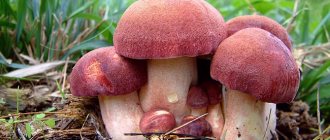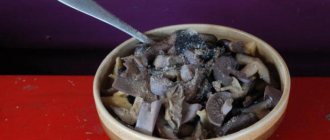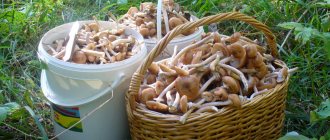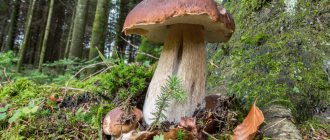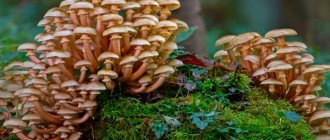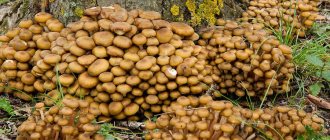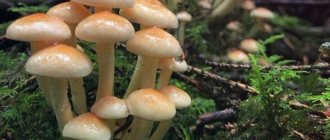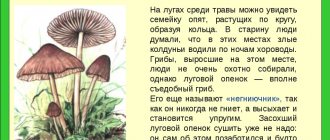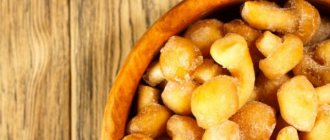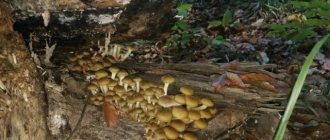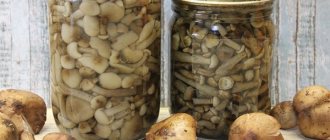Spring honey fungus. Oak-loving collybia Collybia dryophila (Latin name). Belongs to the Negniuchnikov family (Marasmiaceae). In former times it belonged to the genus Collybia of the family Tricholomataceae. The genus includes about 70 species. People call this mushroom money. This mushroom is also called wood-loving collibia. The mushroom is conditionally edible.
Appearance and description
It is quite easy to recognize the honey mushroom due to some unique appearance features. The mushroom has a thin but long stalk that can grow up to 16 cm in height. Its color is often light brown, but depending on the species and environmental conditions it can have a dark tint. Moreover, at the base its shade is darker. The leg sometimes has a ring resembling a skirt. It helps to hold the top.
Most honey mushrooms have a thin stem and a rounded cap.
The cap of young mushrooms has a spherical shape, with barely noticeable scales on the surface.
Initially, its dimensions are no more than 2 cm, but gradually this parameter increases to 11 cm. As it grows, the scales disappear and the top becomes smooth. Also, its outlines are smoothed out and begin to resemble an umbrella. The color of the cap almost completely matches the stem. It can be light beige or with a red tint. Interesting fact : the cap of some honey mushrooms can become covered with mucus, which is why the surface begins to shine like a butter mushroom.
The reverse side of the cap consists of parallel folds running from the edge to the stem. The flesh of honey mushrooms is soft and smooth. It absorbs moisture well, so after cooking the mushrooms remain juicy and pleasant to the taste.
Recipes
Certain types of mushrooms need to be cooked for a long time, as they are toxic. Usually honey mushrooms are cooked from half an hour to an hour, depending on their size. When the mushrooms boil, drain the water and continue cooking in another water. It is better to boil it even earlier. Before eating this mushroom, you need to heat treat the product. It usually takes half an hour to cook. Spring honey fungus will go well with cereals, vegetables, pork, lamb, beef, and poultry. They are fried and stewed. Can be used alone or with other products. Caps of young mushrooms are best suited for pickling and pickling. Vinegar is good for enhancing flavor and as a preservative.
- Honey mushrooms with herbs and sour cream You should take 500 grams of sour cream, 500 grams of honey mushrooms, 2 heads of red onion, 1 bunch of dill, 50 grams of butter, black pepper and salt to taste. Frozen mushrooms are placed in a frying pan without defrosting. Fry until the moisture evaporates. Peel and chop the onion, fry until soft in a hot frying pan. Onions and mushrooms need to be combined, add butter, heat, and then add pepper and salt. Place sour cream in the dish, let it boil, add dill. Remove from heat after a minute, mix all ingredients and eat.
- Salting honey mushrooms For salting you will need 500 grams. salt, ten kilograms of honey mushrooms, dill, 120 allspice peas, chopped onions, bay pepper. You can take mushrooms of different sizes. Rinse thoroughly and completely cut off the stems of large specimens. We cut the hats into pieces. Place a pan of water on the stove, add 1 teaspoon of salt per 1 liter of water. Place the mushrooms inside after the water boils. Cook for 20-25 minutes, then place in a colander until cool. In a bowl for pickling, put a bay leaf on the bottom, dill, chopped onion, pepper, and then a layer of honey mushrooms 5 cm thick. Salt the honey mushrooms (50 grams of salt per 1 kg of mushrooms). Afterwards, place a layer of mushrooms and spices in a pickling bowl. The mushrooms are covered with a cloth, and a lid and weight need to be placed on top. Bring to readiness within 35-45 days in a dark place.
Where and when do honey mushrooms grow?
A group of honey mushrooms grows on the bark of a tree.
In most cases, honey mushrooms grow in large groups, and in one “flock” there can be around hundreds of mushrooms. But they rarely come across in a single copy. Honey mushrooms love to grow on stumps and near trees; they also feel great in meadows and forest edges, near shrubs. Therefore, an experienced mushroom picker knows that collecting them requires combing the entire clearing, and not just certain areas.
The mushroom is found in forest areas throughout Russia. It also grows in many European countries. Honey mushrooms adapt well to subtropical climates. They feel uncomfortable only in those lands where the temperature remains low for most of the fall.
You can collect honey mushrooms from August. In the last month of summer, some species are already beginning to rise above the grass. Their growth continues until the end of September. However, around the same time, other families of honey mushrooms appear that are able to exist in colder climates. They can be collected until mid-November or before frost sets in. Since mushrooms quickly absorb moisture, they grow rapidly. If it has recently rained in the area, then honey mushrooms have probably already appeared in the local forests, which can be put in a basket.
Honey fungus
Another fake honey fungus, which is directly related to non-rotting mushrooms. It is named honey mushroom only for its partial external resemblance to true honey mushrooms, but otherwise it is not at all similar to them.
Fresh fruiting bodies of the meadow honey fungus are usually small: the cap is on average 5 cm in diameter, the stem is 6 cm long, occasionally there are specimens with an 8-centimeter cap and a stem up to 10 cm. The color is ocher-brownish, depending on the weather: in the heat it is paler than at high humidity (in this case the cap also becomes sticky). The mushroom does not have a ring on the stem - which is why it is similar in appearance to some “toadstools”, so only experienced mushroom pickers collect it. However, in some places the meadow honey fungus is quite popular.
This mushroom avoids forests, preferring open spaces overgrown with grass, especially those where cows and other herbivores often graze, and the ground is well fertilized. The honey fungus is a typical saprophyte that feeds on organic debris.
It bears fruit almost throughout the warm season - from the end of May to the end of October .
Types of mushrooms, names and photos
A large number of different representatives of honey mushrooms are found in nature. They are quite easy to distinguish from other mushrooms by a number of characteristics. Among the general diversity of species, several main ones can be distinguished.
Summer honey fungus
Summer honey fungus
This species belongs to the strophariaceae family, the genus Kyneromyces. Mushrooms choose forest areas to grow and like to appear on damaged tree trunks. In mountainous areas they are placed on spruce trees. They grow in large groups, rarely found alone.
The summer honey fungus lengthens to 8 cm in height, the thickness of its leg does not exceed 1 cm. At the base it is brown, with small dark spots, and at the top it is light and smooth. There may also be a film on the leg.
The cap grows no more than 6 cm in diameter; in young mushrooms this parameter barely reaches 3 cm. Initially it has a round shape, but gradually a small tubercle grows in the center, which makes it look like an umbrella. The surface color varies from light brown to brown.
The flesh of a young mushroom is light in color, but gradually turns brown. It feels soft and elastic to the touch.
Interesting: Chanterelle mushrooms
